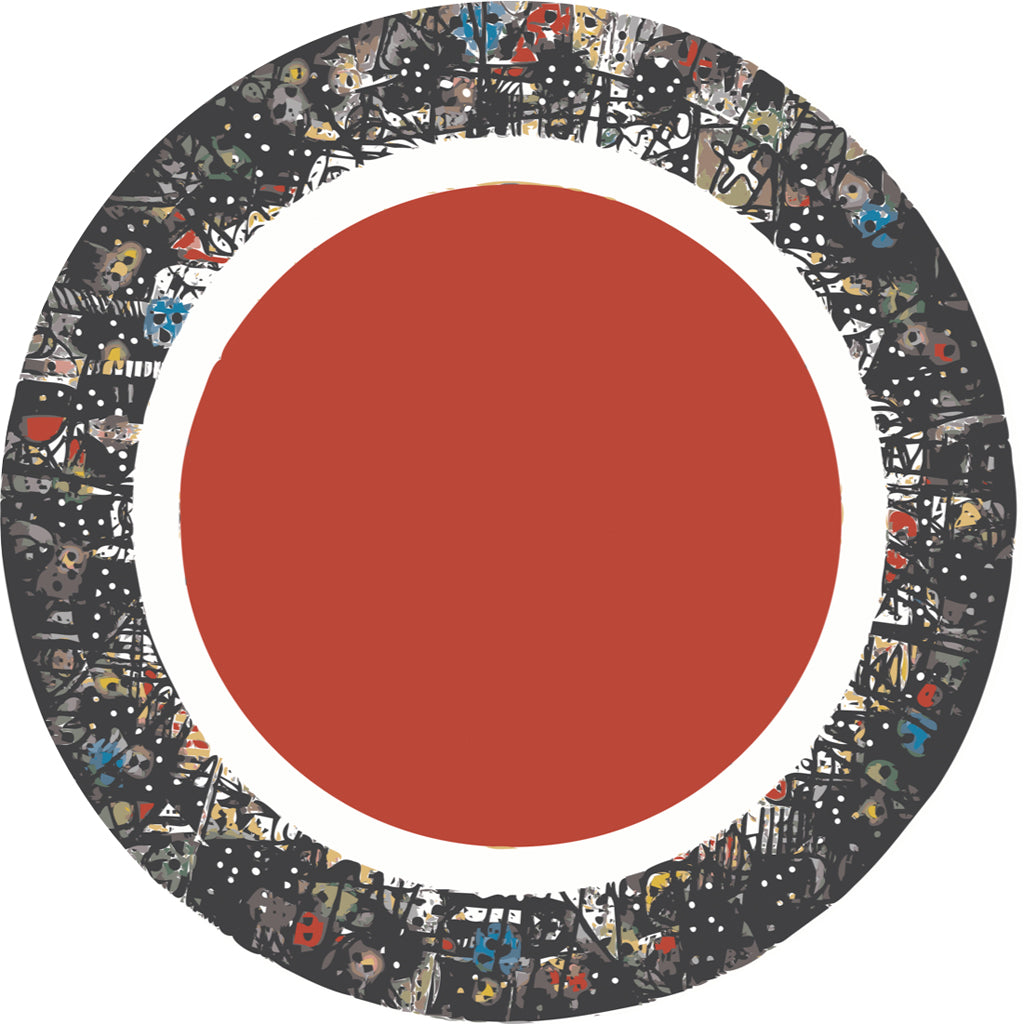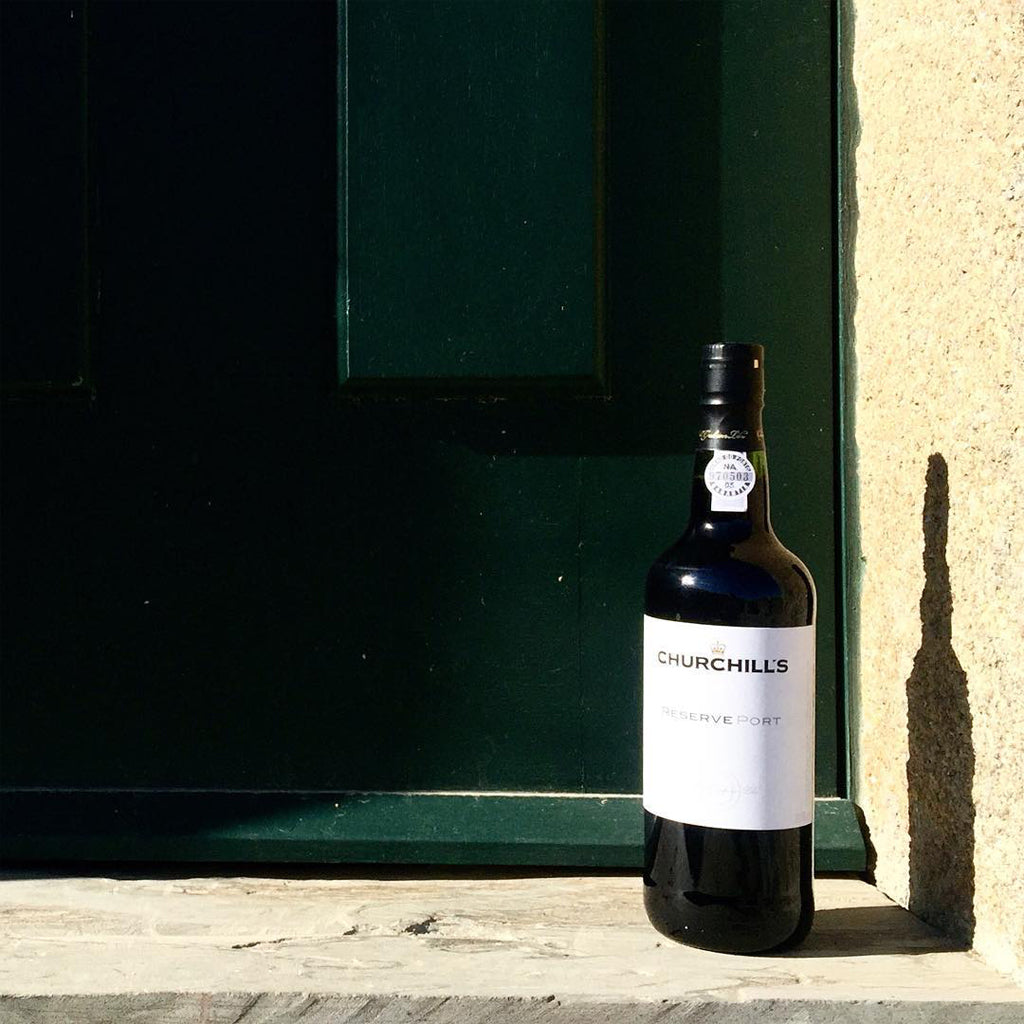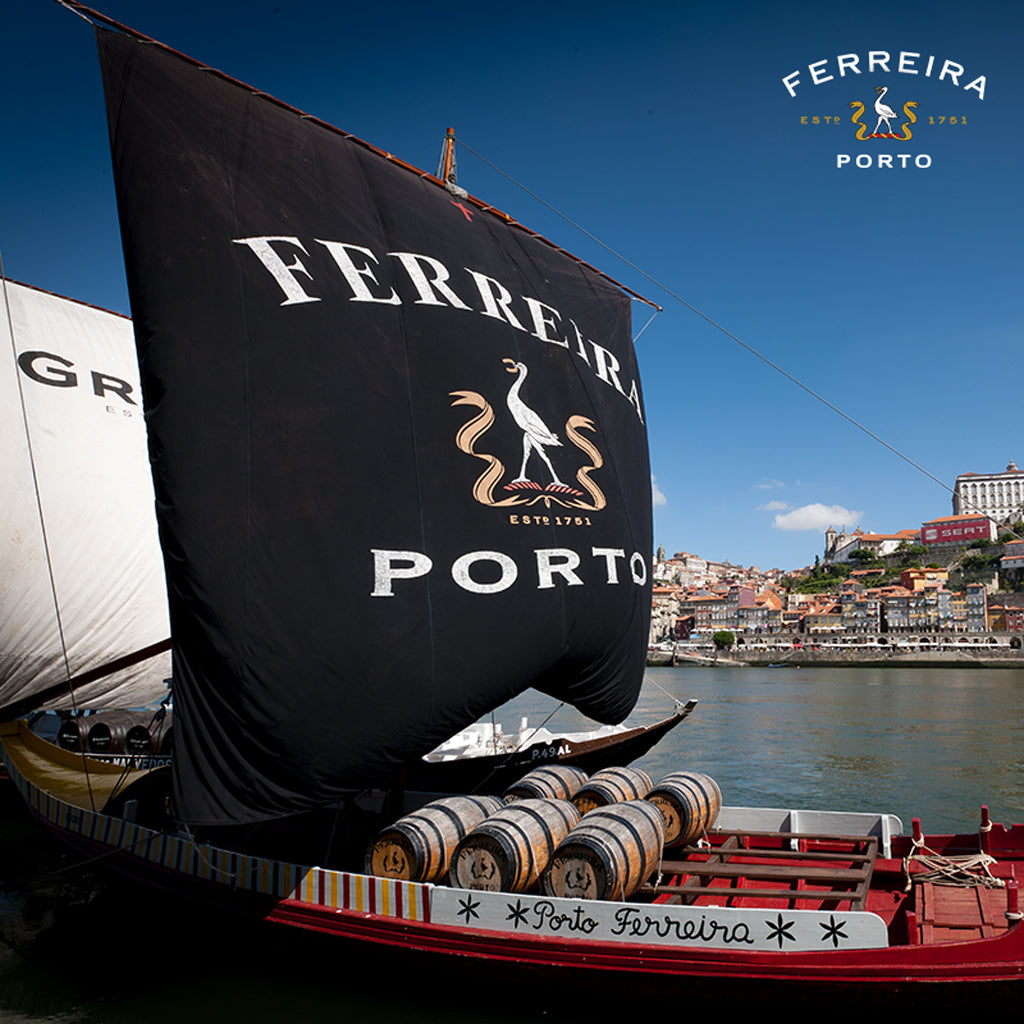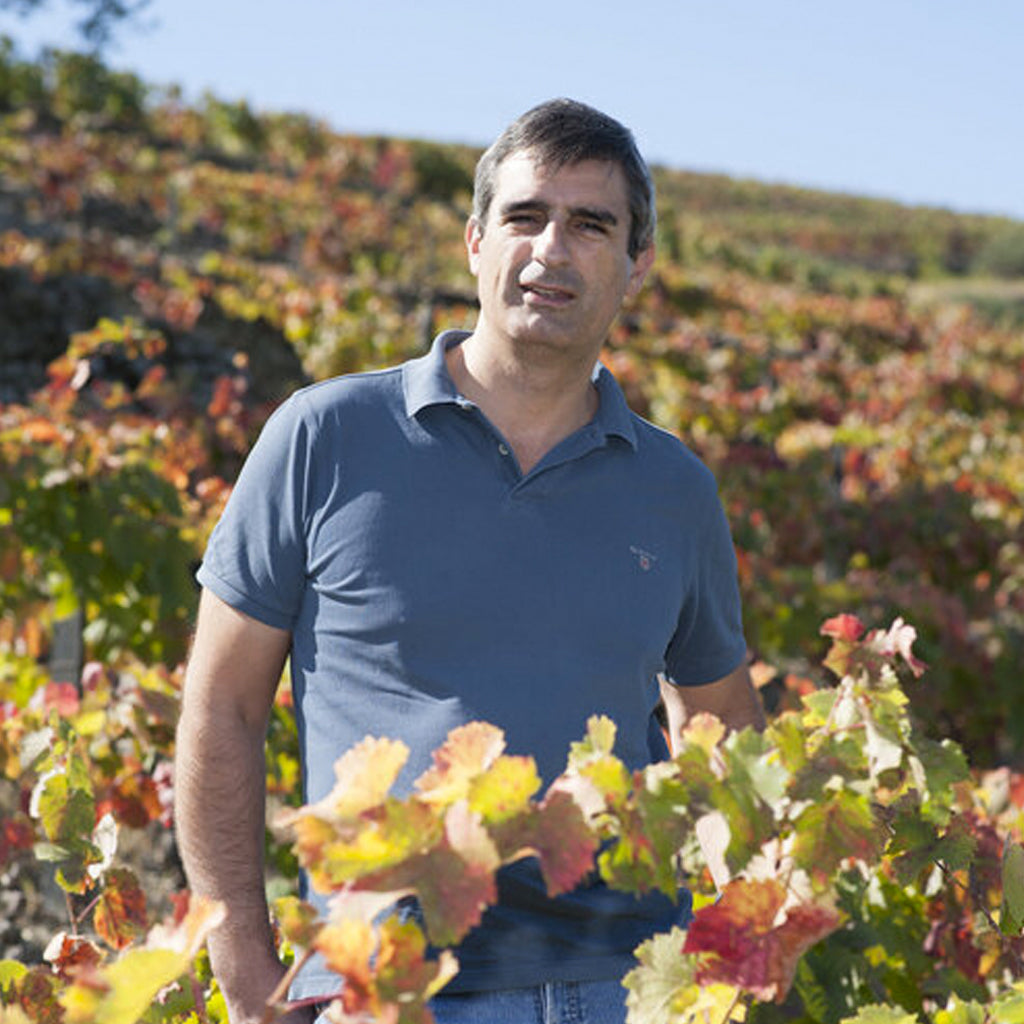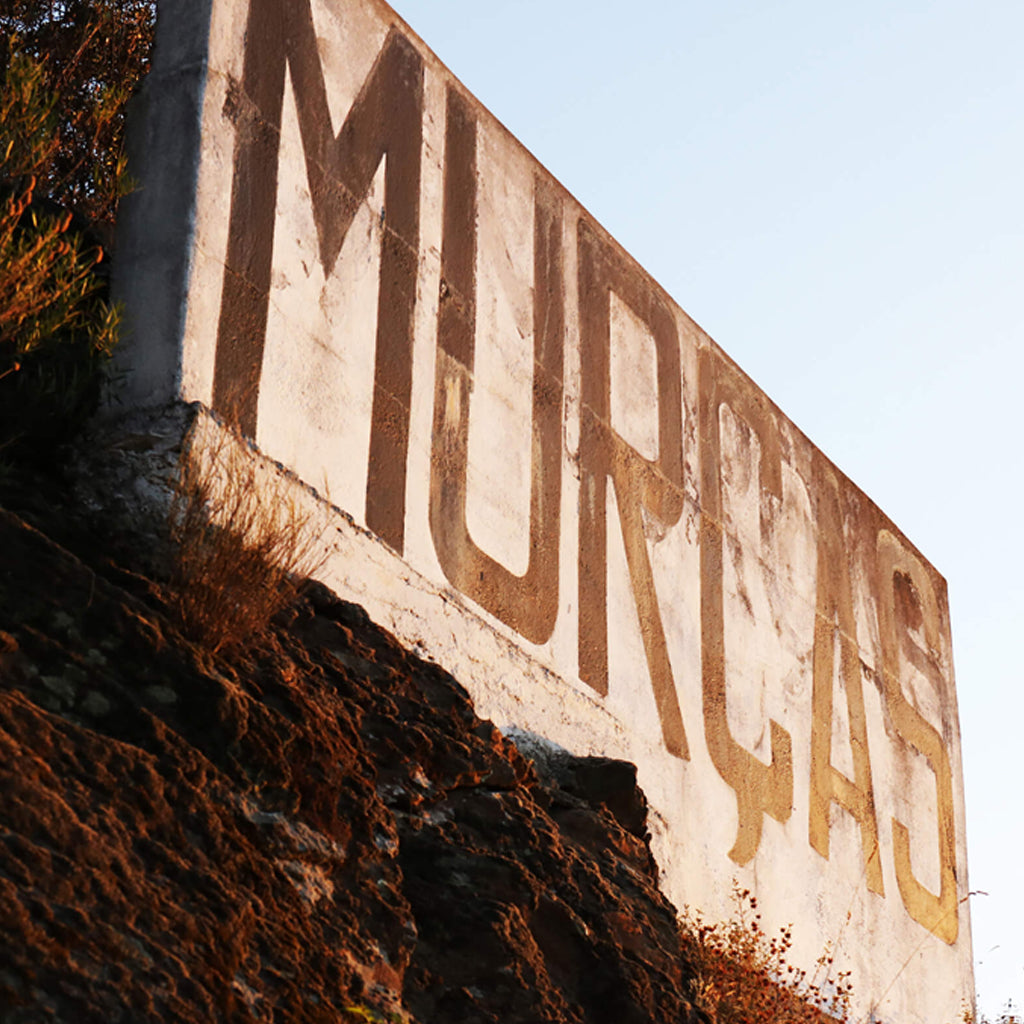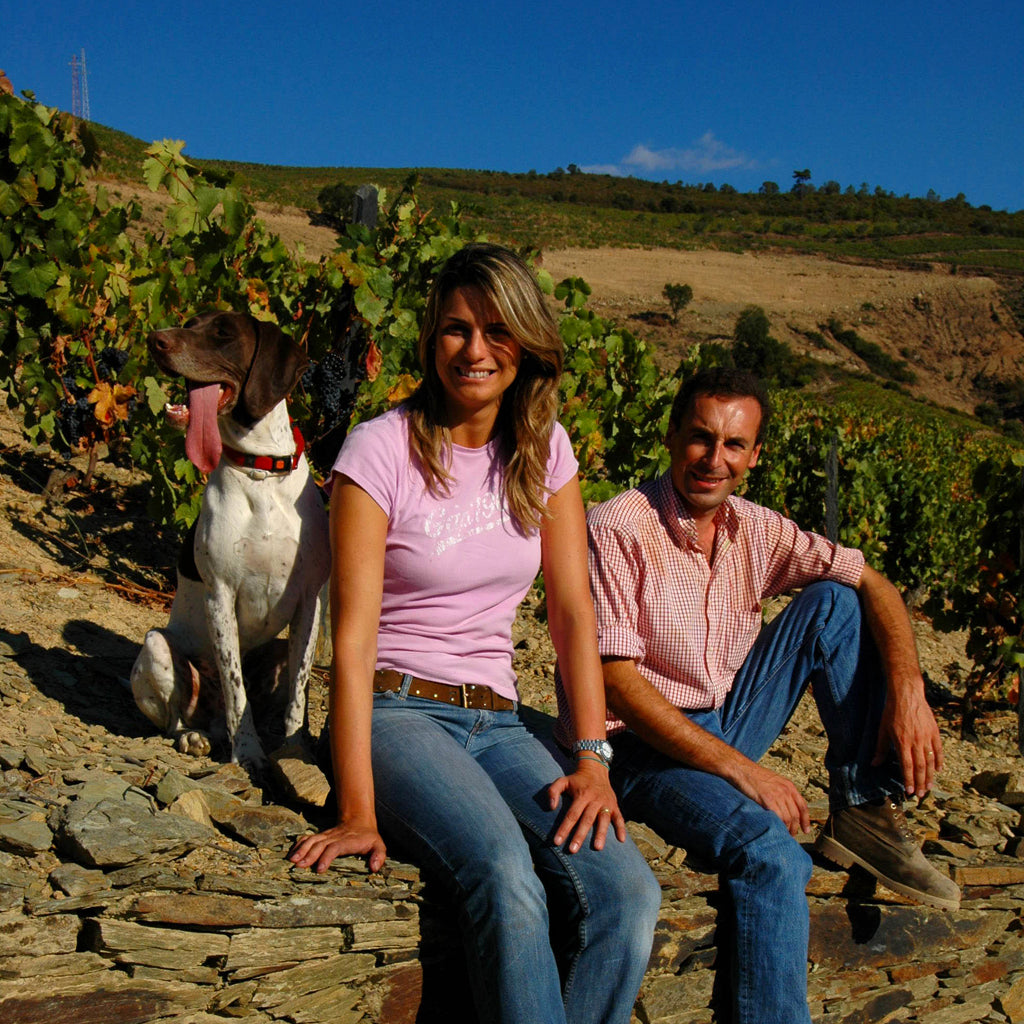Portugal | Porto & Douro

Long famous as the source of port wine, the Douro is now also renowned for its fine, rich unfortified wines, both red and white. The Douro is one of the wildest, most mountainous and rugged wine regions of Portugal, cut through in deep twists and turns by the River Douro. Defying gravity on the steep slopes along the banks of the river and its tributaries, the vines are planted in poor, schistous soils.
The wine region follows the course of the river down from the Spanish border to a point near the town of Mesão Frio, about 90km up-river from the city of Porto (Oporto). Here the Serra do Marão rises up, protecting the region from the influence of the Atlantic Ocean. Rain falls mainly on the western side of the Marão range, and to a certain extent in the western end of the Douro wine region, but dwindle further up-river, and by the Spanish border conditions are almost desert-like.
The Douro region is divided into three sub-regions: from west to east the Baixo Corgo, Cima Corgo and Douro Superior. The fertile, cooler, rainier Baixo Corgo, closest to the Serra do Marão, is the sub region with the most vineyards.
The Cima Corgo, including the towns of Pinhão, São João da Pesqueira and Tua, is the heartland of fine port production, also the source of many of today’s fine unfortified wines. The Douro Superior, very cold in winter, infernally hot in summer, is the biggest of the sub-regions (by no means all planted but much planting is underway).
The Douro has a huge selection of local grape varieties, and many vineyards of impressive, gnarled old vines that give small yields of rich, complex wine, whether for port or for unfortified wines. Dozens of different grape varieties may be mixed together in these old vineyards. In modern vineyards, vines are planted separately, and five grapes have been declared the top choice for port: Tinta Roriz, Touriga Franca, Touriga Nacional, Tinta Barroca and Tinto Cão.
Port wine is a Portuguese fortified wine produced exclusively in the Douro Valley in the northern provinces of Portugal. It is typically a sweet, red wine, often served as a dessert wine, though it also comes in dry, semi-dry, and white varieties. Fortified wines in the style of port are also produced outside Portugal, including in Australia, France, South Africa, Canada, Spain, and the United States. Under European Union Protected Designation of Origin guidelines, only the product from Portugal may be labelled as port.
Port from Portugal comes in several styles:
Ruby Port: This is the least expensive and most extensively produced type of port. After fermentation, it is stored in tanks of concrete or stainless steel to prevent oxidative ageing and to preserve its bright red colour and full-bodied fruitiness. The wine is usually blended to match the style of the port house to which it is to be sold. The wine is fined and cold filtered before bottling and does not generally improve with age, although premium ruby ports are aged in wood from four to six years.
Tawny Port: Aged tawny ports are wines usually made from red grapes that are aged in wooden barrels exposing them to gradual oxidation and evaporation. As a result of this oxidation, they gradually mellow to a golden-brown colour. The exposure to oxygen imparts "nutty" flavours to the wine, which is blended to match the house style.
Aged tawny ports are sweet or medium dry and typically consumed as a dessert wine, but can also pair with a main course.
When a port is described as tawny, without an indication of age, it is a basic blend of wood aged port that has spent time in wooden barrels. Above this are tawny with an indication of age which represent a blend of several vintages. The target age profile, in years in wood, is stated on the label. It is also possible to produce an aged white port in this manner, with some shippers now marketing aged white ports.
Colheita Port: A Colheita Port is a single-vintage tawny port aged for at least seven years, with the vintage year on the bottle instead of a category of age (10, 20, etc). However, a Colheita port should not be confused with vintage port: a vintage port will spend only about 18 months in barrels after harvest and will continue to mature in bottle, but a Colheita may have spent 20 or more years in wooden barrels before being bottled and sold.
White Port: White port is made from white grapes, such as Malvasia Fina, Donzelinho, Gouveio, Codega and Rabigato, and can be made in a wide variety of styles. Ordinary white ports make an excellent basis for a cocktail while those of greater age are best served chilled on their own.
Late Bottled Vintage: Late bottled vintage (often referred to simply as LBV) was originally wine that had been destined for bottling as vintage port, but because of lack of demand was left in the barrel for longer than had been planned. Over time it has become two distinct styles of wine, both of them bottled between four and six years after the vintage, but one style is fined and filtered before bottling, while the other is not.
Unfiltered LBVs are mostly bottled with conventional driven corks and need to be decanted before serving, after which they should be consumed within a few days. Filtered port has the advantage of being ready to drink without decanting and is usually bottled in a stoppered bottle that can be easily resealed.
LBV is intended to provide some of the experience of drinking a vintage port but without the need for lengthy bottle ageing.
Crusted Port: This is usually a blend of several vintages. Unlike vintage port, which has to be sourced from grapes from a single vintage, crusted port affords the port blender the opportunity to make best use of the varying characteristics of different vintages. Crusted port is bottled unfiltered, and sealed with a driven cork. Like vintage port it needs to be decanted before drinking.
Vintage Port: Vintage port is made entirely from the grapes of a declared vintage year. Not every year is declared a vintage in the Douro. The decision on whether to declare a vintage is made early in the second year following the harvest. The decision to declare a vintage is made by each individual port house, often referred to as a 'shipper'.
Vintage ports may be aged in barrels or stainless steel for a maximum of two and a half years before bottling, and generally require another ten to forty years of ageing in the bottle before reaching what is considered a proper drinking age. Since they are potentially aged in cask for only a short time, they retain their dark ruby colour and fresh fruit flavours. Particularly fine vintage ports can continue to gain complexity for many decades after they were bottled.
Much of the complex character of aged vintage port comes from the continued slow decomposition of grape solids in each bottle. These solids are undesirable when port is consumed, and thus vintage port typically requires a period of settling before decanting and pouring.
Single Quinta Vintage Port: These are wines that originate from a single estate, unlike the standard bottlings of the port wine houses which can be sourced from a number of quintas. Single Quinta bottlings are used in two different ways by different producers. Most of the large port wine houses have a single quinta bottling which is only produced in some years when the regular vintage port of the house is not declared. In those years, wine from their best quinta is still bottled under a vintage designation, rather than being used for simpler port qualities.
Our Producers
Explore Wines
From£32.00
From£14.50
From£22.00
£21.00
From£19.00
From£18.00
From£13.00
From£16.75
- ←
- →




